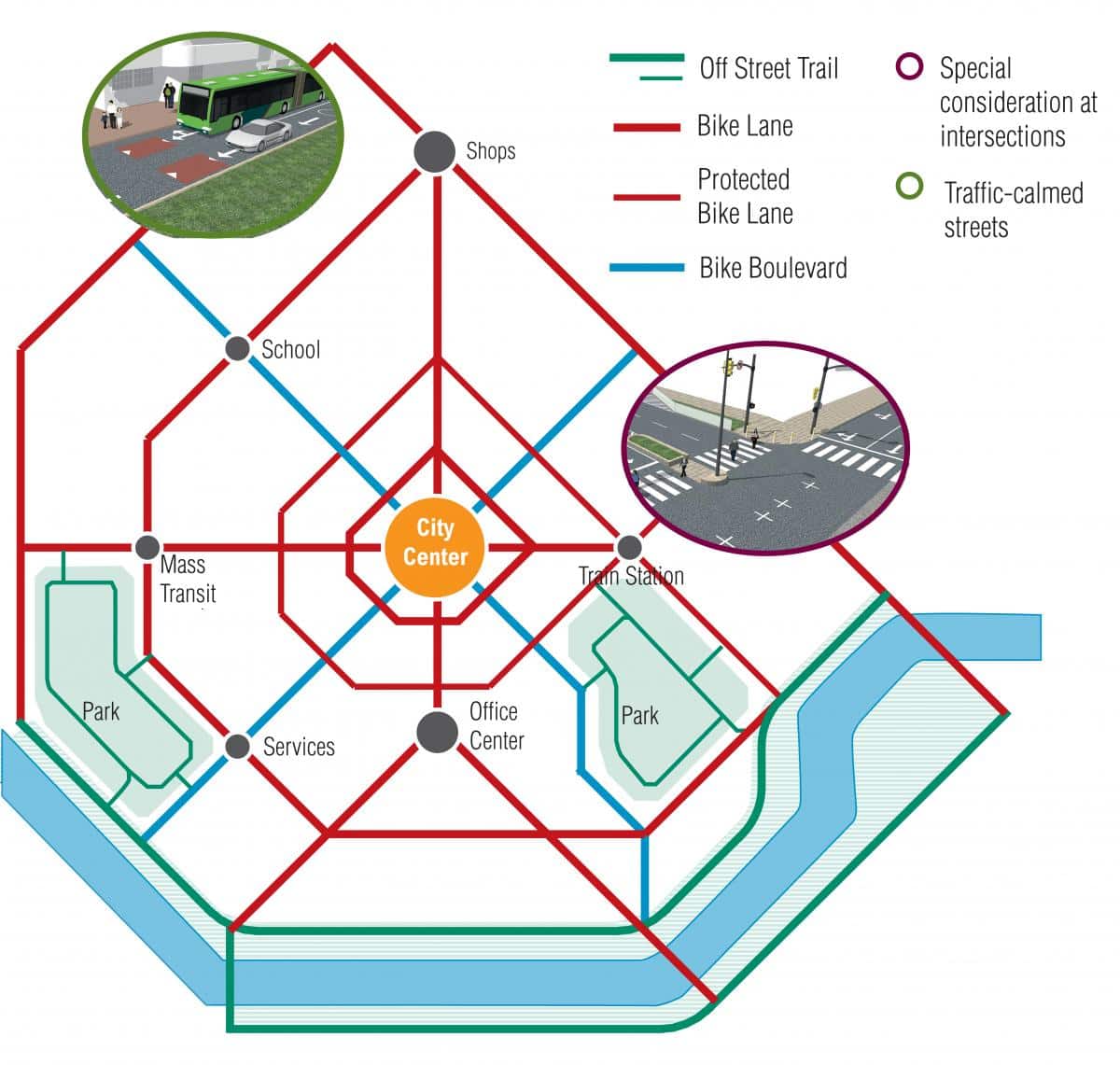In cities around the world, residents have various excuses for not cycling: “The weather is bad;” “There are too many hills;” “People love cars too much”. The truth is that the main barrier to cycling in most places is that it is not seen as a normal, common or convenient transportation option.
As soon as biking becomes more convenient than other options, it can take off. For this to happen, the needs of cyclists should be considered throughout the road network. Routes should be coherent, direct, and continuous.

Bogota, Colombia found that adding more than 100 km (62 miles) of bike lanes helped reduce cyclist deaths by 47.2 percent between 2003 and 2013. It also increased cycle use from just over 3 percent of all daily trips to over 6 percent.
Regardless of whether the land is flat, hilly or a mixture of both, it is essential to plan for continuity of the bike path network for complete connection across the city.